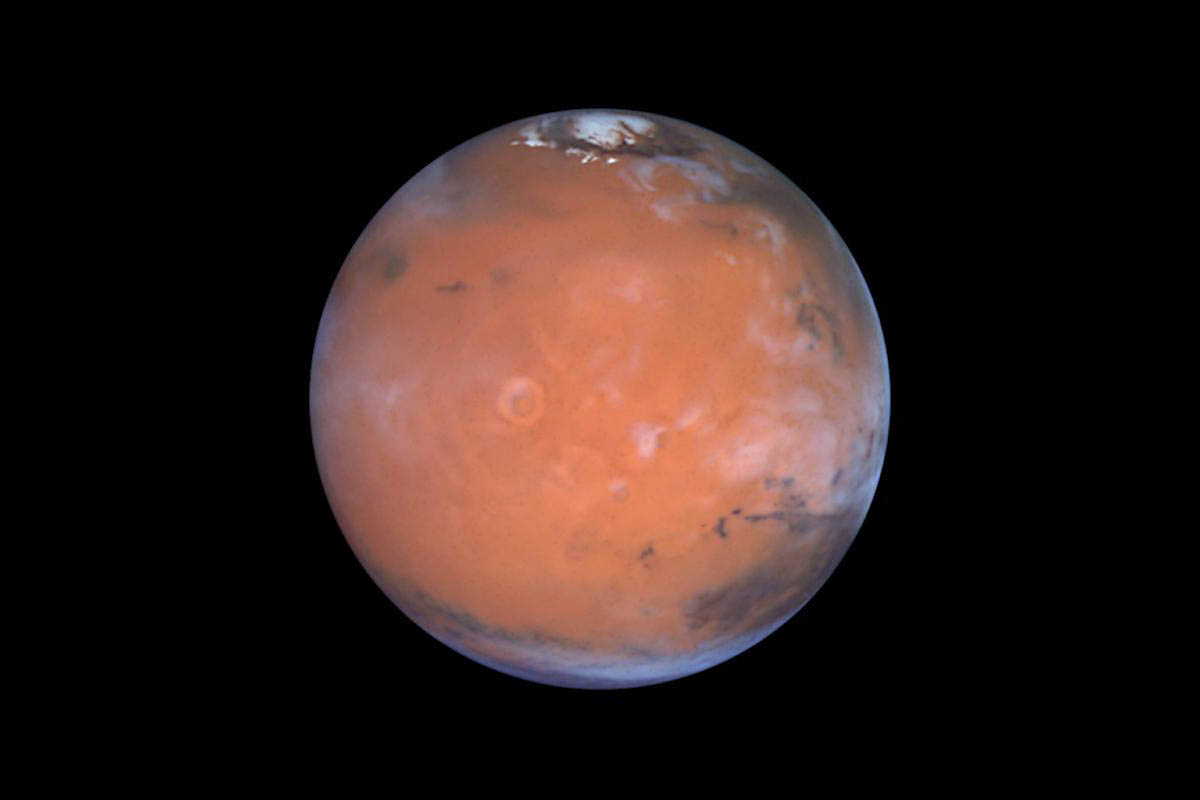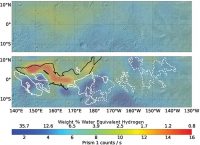A new paper suggests hydrogen-possibly water ice-in the Medusa Fossae area of Mars, which is in an equatorial region of the planet to the lower left in this view. (Steve Lee (University of Colorado), Jim Bell (Cornell University), Mike Wolff (Space Science Institute), and NASA)
Home A new paper suggests hydrogen-possibly water ice-in the Medusa Fossae area of Mars, which is in an equatorial region of the planet to the lower left in this view. (Steve Lee (University of Colorado), Jim Bell (Cornell University), Mike Wolff (Space Science Institute), and NASA) A new paper suggests hydrogen-possibly water ice-in the Medusa Fossae area of Mars, which is in an equatorial region of the planet to the lower left in this view. (Steve Lee (University of Colorado), Jim Bell (Cornell University), Mike Wolff (Space Science Institute), and NASA)



